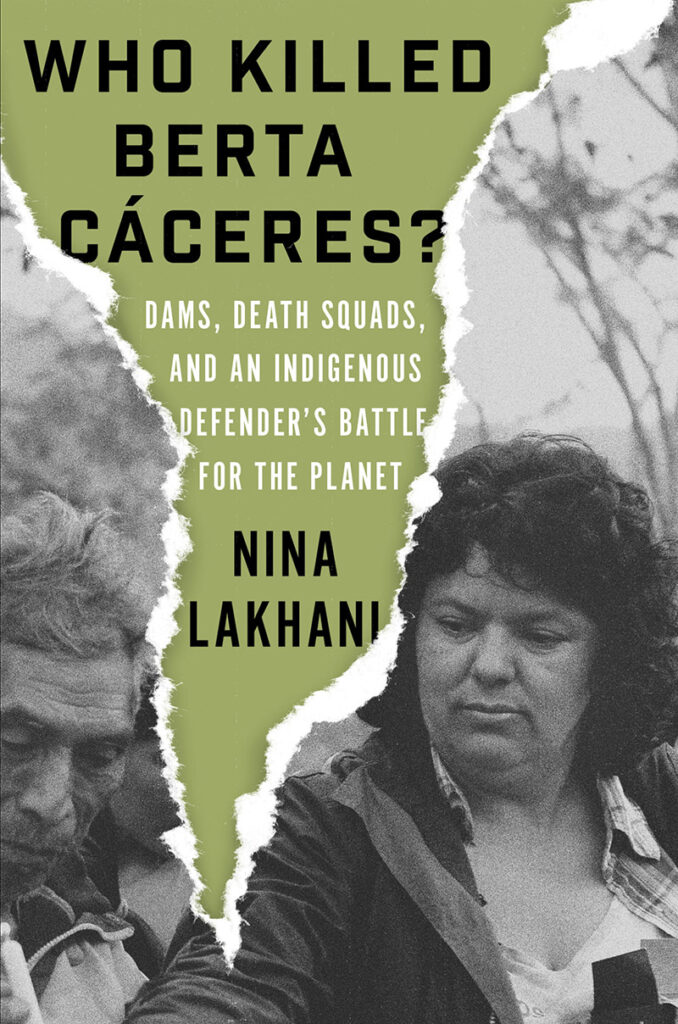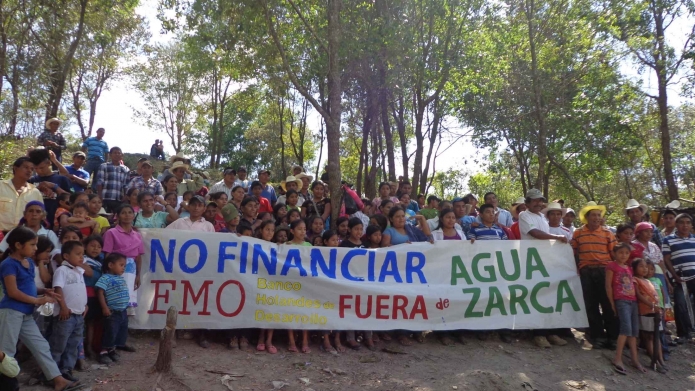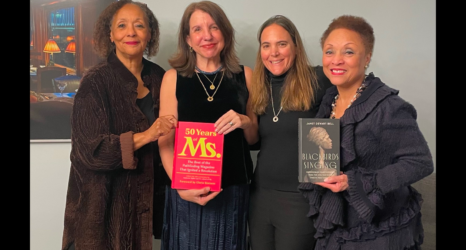Part of the desolation left behind by the 2016 assassination of indigenous land and water defender Berta Cáceres is the forces that allowed her brutal killing to occur in the first place.
Nina Lakhani’s Who Killed Berta Cáceres? digs right into the thick layers of the corrupt, colonial, imperialist, racist and misogynistic systems that contributed to the death of this beloved Honduran Lenca leader, cofounder of the Council of Popular and Indigenous Organizations of Honduras and the 2015 winner of the prestigious Goldman Environmental Prize.

Lakhani deconstructs the neoliberal mafia, as she puts it, that persecuted Cáceres as she fought for indigenous rights in Honduras and, up until her last breath, against the construction of the massive, internationally funded hydroelectric dam, Agua Zarca, on the Gualcarque River. The river is culturally sacred to Lenca people, as well as a primary water resource essential to food supplies.

Lakhani, a veteran environmental justice reporter, persuasively lays out Honduras’ longtime status as an epicenter for U.S. intervention, militarization and imperialism; nowadays it’s a narco state ruled by right-wing President Juan Orlando Hernández, whose brother is a convicted drug trafficker.
Lakhani charts this troubled history, which spans more than a century, highlighting the Cold War and most recently the 2009 U.S.-backed coup of democratically elected former president Manuel Zelaya.
Lakhani emphasizes that this culture of corruption, drug trafficking and violence across Honduras and Central America was largely imported and nurtured by imperialistic forces, in conjunction with local elites, fighting to monopolize the region’s natural resources. The environment is a site of struggle, and Cáceres became a threat to a system seeking opportunities for exploitation.
To the book’s central question—who, indeed, killed Berta Cáceres?—Lakhani reminds us repeatedly that Cáceres’ blood is on the hands of many people, not solely those who pulled the trigger on the night of March 2, 2016.
Enter Desarrollos Energéticos SA (DESA), the private company that built Agua Zarca. Lakhani examines the makings of DESA and its strongest allies, particularly the elite Honduran family Atala-Zablah.
In a postcoup Honduras, the family and other elites “unleashed a tsunami of environmentally destructive ‘development’ projects as the new regime set about seizing control of resource- rich territories,” Lakhani writes. These companies’ “entrepreneurship” is aided by increasing militarization and support from the U.S. government: The president of DESA, David Castillo, is himself a U.S.-trained former intelligence officer. At least two of the seven men sentenced in November 2018 to up to 50 years in prison for Cáceres’ murder were trained by U.S. Army Special Forces with connections to the macabre School of the Americas, based in Fort Benning, Ga.
Lakhani’s six-plus years of meticulous reporting from Central America and Mexico shines in this book. She shares her own experiences following the land and water defenders throughout Honduras, as well as intimate con- versations with Cáceres, Cáceres’ three daughters, and her mother and biggest influence, Austra Bertha Flores López.
There are other interviews with crucial members of the Honduran resistance, including Miriam Miranda, a Garifuna environmental and human rights activist and one of Cáceres’ closest friends; and Gustavo Castro, a Mexican environmentalist who was also shot at Cáceres’ home the night of her murder but who survived by playing dead.
And then there is Lakhani’s narration of her visits with all but one of the men who have been convicted of Cáceres’ murder. The conversation with Castillo, the DESA president—who blamed Lakhani for his arrest—at the Tamara penitentiary in Honduras is one of many examples of Lakhani’s groundbreaking work.
Who Killed Berta Cáceres? angers, reminding us that Cáceres’ assassination is not an isolated case. At the same time, it inspires with poignant memories of Cáceres’ childhood, the origins of her resistance and explorations of what she meant to her family, the Lenca community and Honduras.
Who Killed Berta Cáceres? is a portrait of passionate activism and an assertion that despite her tragic death, Cáceres’ ideals have multiplied—and survived.
This piece is excerpted from the Spring 2020 issue of Ms.
Become a Ms. member to read the rest—and get even more of our feminist reporting and analysis delivered to your door, or to your mobile device, each time we release a new issue!





